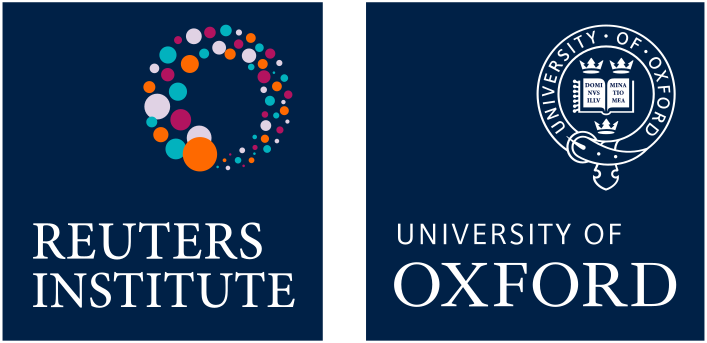
Norway
The Norwegian media landscape combines strong national legacy brands with public service media, which have managed the transition from print to the web well. However, cost-cutting has continued this year due to changes in the media structure. Trust as well as willingness to pay remain high.
The year saw continued cuts in the media industry. The reasons are a mix of rapid falls in print combined with the need to transition to new technology, volatile advertising income, increased competition from foreign news, podcasts, and entertainment, restructuring, and effects of a changed press subsidy scheme. In 2023, media conglomerate Schibsted separated their editorial news businesses into the trust Schibsted Media and put their profitable digital ads services into Schibsted Marketplace. Commentators’ concerns for Schibsted Media’s revenue were confirmed when the trust announced 350 redundancies in 2025. The national public service broadcaster NRK has also been cutting spending (by €17m), resulting in 84 redundancies with more to come. Meanwhile, also in late 2024, the second largest Norwegian news conglomerate Amedia acquired Danish Berlingske Media, publisher of major broadsheets as well as tabloid B.T., thereby strengthening their position in the Nordic region.
While digital subscriptions still do not replace declines in other income, of the 48 markets surveyed this year, Norwegian news users are again the most willing to pay for news, with 42% having accessed paid news. Norwegians are avid readers of news and this, coupled with an innovative media industry, a long-standing press subsidy scheme, and the absence of freesheets, helps explain the relative success of online news payment. Ongoing subscriptions and memberships are the most common forms of payment and, as seen in earlier years, the Norwegian subscription market is divided between major national brands (Aftenposten and VG) and regional and local news. Two bundled subscription offerings from Schibsted (Full tilgang) and Amedia (+Alt) are popular. Schibsted’s bundle gives access to all the company’s subscription newspapers, including Aftenposten and regional brands, as well as a catalogue of magazines. Amedia’s alternative covers over 100 local newspapers and podcast content.
The Norwegian podcast market has seen continued consolidation this year with NRK and newspapers VG and Aftenposten, both owned by Schibsted, as the leading local players. Norwegians’ most used platforms are the NRK Radio app (63%), Spotify (45%), and YouTube (23%). One trend is that major providers try to direct users to their own platforms, rather than third-party ones like Spotify or Apple. NRK and Schibsted now only occasionally release new episodes on these platforms, perhaps to keep their ranking and tempt listeners to switch to their platforms. Schibsted relies heavily on its own subscription-based PodMe platform, with 41% of Norwegians saying they are willing to pay for a news-related podcast.
The news agenda has been dominated by war coverage – both from Ukraine and the Middle East – and geopolitical turmoil has also pivoted journalism to focus heavily on defence and foreign policy. But this does not seem to have weakened trust in news which remains high and stable at 54% overall and Norwegians’ preferred news sources are still online news and TV, both far ahead of social media.
Debate about the media policy changes introduced in 2023 continued throughout 2024. Commercial broadcaster TV2, which implemented major cuts in 2023, lobbied to abolish the newly introduced VAT on video news (other news outlets are exempt from VAT). Changes in the general subsidy scheme saw so-called alternative news site Document.no, as well as investigative journalism site Filter Nyheter, receive their first subsidies in 2023. The reformed subsidy scheme aims to support diversity in news in general and local newspapers, and this year the €35m was divided between 162 news providers.
AI has been high on the agenda in the Norwegian news industry, both as a tool and a threat. Almost half of the journalists asked in a recent survey1 worried that AI would increase unemployment. Editors were more optimistic about AI in offering useful tools – although two out of three journalists also saw AI as a good aid in the newsroom. Several major providers, including Schibsted brands and NRK, have introduced AI-made summaries of news articles. During the US election, commercial broadcaster TV2 ran an experiment creating an AI avatar which answered readers’ questions about the election. ‘KI-Kjetil’ received over 10,000 questions,2 of which the avatar answered 0.04% incorrectly. TV2 published an online log of its mistakes with a detailed account of how and why they created the avatar.
Janne Biedilæ Bjørgan and Hallvard Moe
University of Bergen
Changing media
TV and print continue a slow but seemingly steady decline as sources for news, while social media are also on a downward path.
Pay for online news
42%
Trust in news overall
54%
(-1)
=7/48
Overall trust in news has stabilised at a level higher than pre-COVID. By brand, levels and rankings remain stable. NRK holds its top position as the most trusted news provider, with local and regional newspapers as runners-up. Overall changes are rather minor, but the trend is for tabloid brands to see a decline.

